¤ 10+ minutes Read
Places to Visit in Sanchi
Steeped in Buddhist history and spiritual significance, Sanchi in Madhya Pradesh offers timeless archaeological wonders. Discover ancient stupas, sacred pillars, and serene monasteries among the top places to visit in Sanchi.
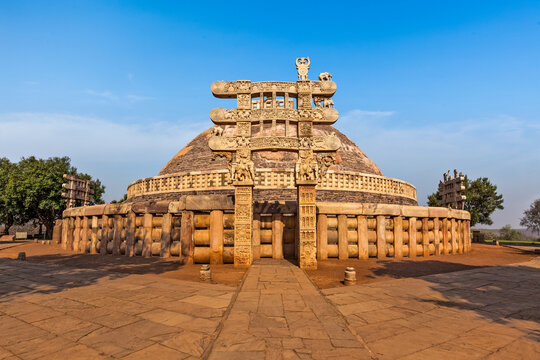
Great Stupa of Sanchi
The Great Stupa is the oldest stone structure in India, originally commissioned by Emperor Ashoka in the 3rd century BCE. This hemispherical dome symbolizes the cosmic Mount Meru and contains relics of the Buddha.
Four magnificently carved toranas (gateways) mark the cardinal directions, depicting scenes from the life of Buddha and Jataka tales. The entire structure is surrounded by a stone vedika (railing) with meditational walkways. It remains the centerpiece of Sanchi’s UNESCO World Heritage complex.
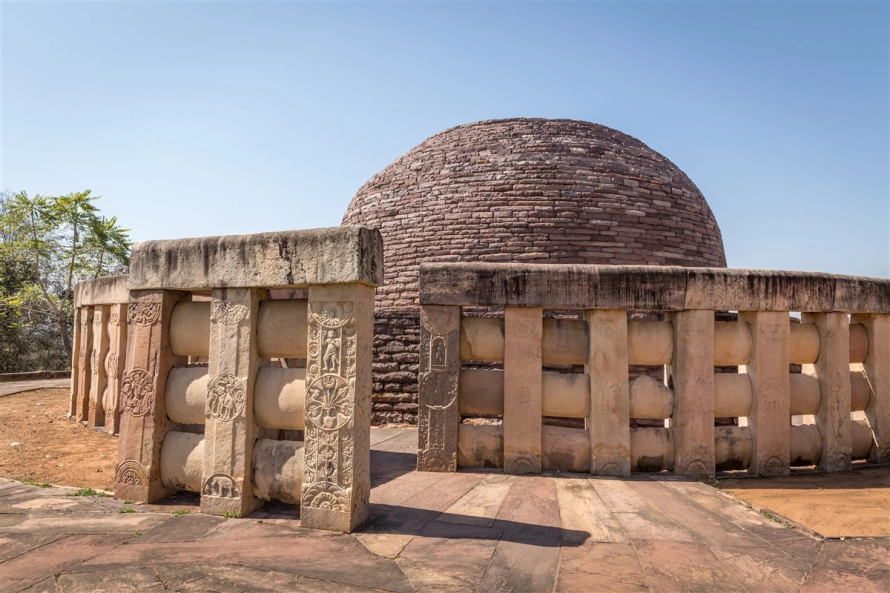
Stupa 2
Known for its ornate railings decorated with medallions and relief sculptures showing Buddhist symbols and everyday life from the ancient period.
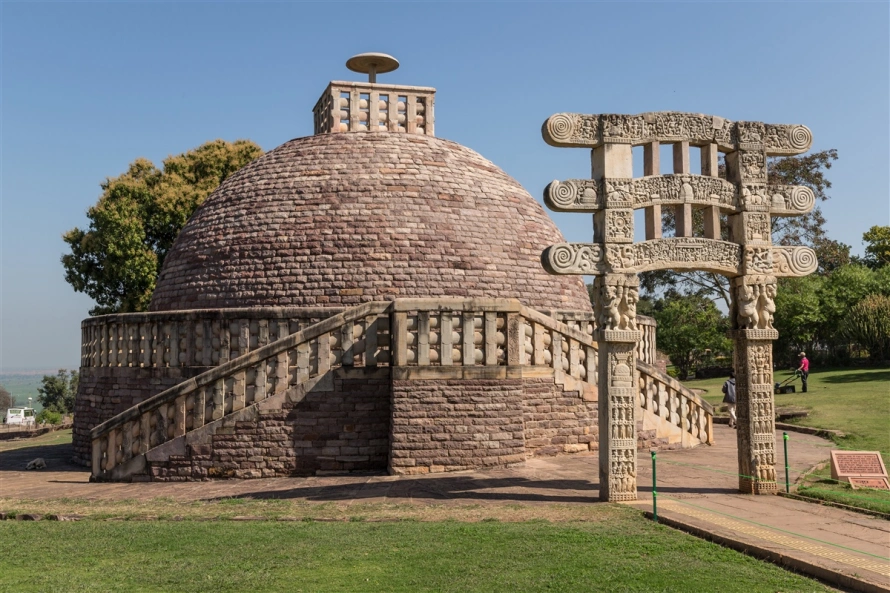
Stupa 3
A smaller stupa containing relics of Buddha’s disciples, with a single beautifully carved gateway and a crowned umbrella (chhatra).

Ashoka Pillar
Famous for its exquisite polish and four-lion capital, which later became India’s national emblem, displaying outstanding Mauryan craftsmanship.
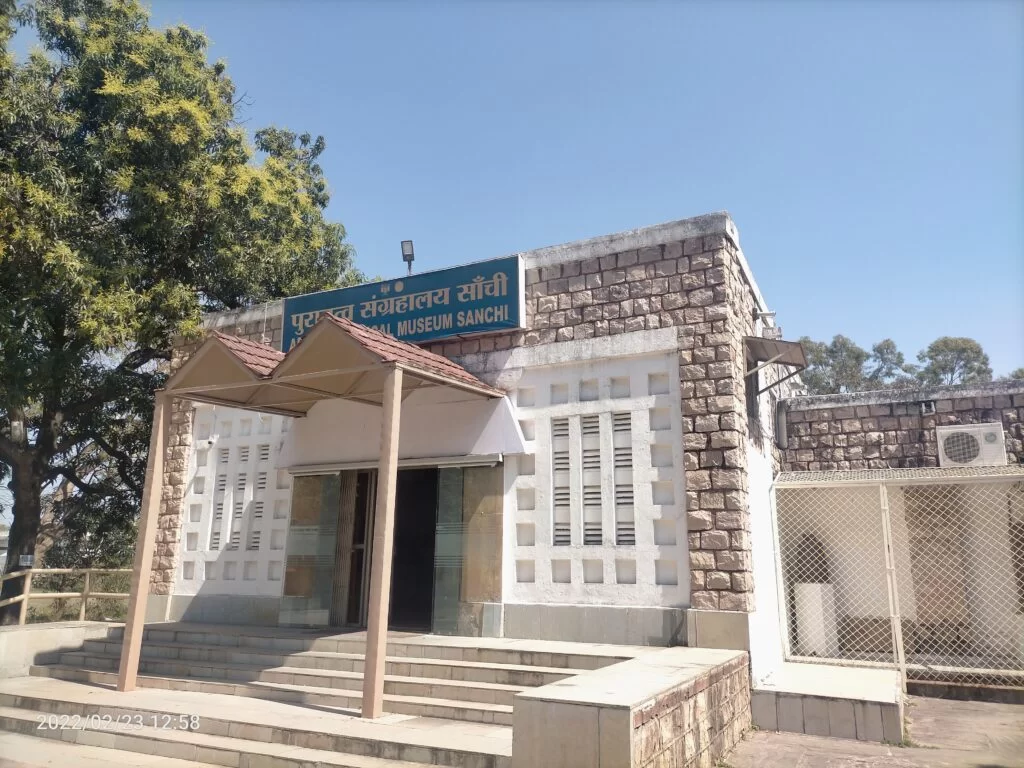
Sanchi Archaeological Museum
Houses an exceptional collection of artifacts from the site, including the original lion capital from the Ashoka Pillar and intricate sculpture fragments.

Temple 17
Temple 17 represents one of the earliest and best-preserved examples of Gupta period temple architecture. Dating to the 5th century CE, its simple yet elegant design features a flat-roofed sanctum and pillared porch.
The temple’s classical proportions and minimal decoration highlight the transition from rock-cut to structural temple design. Built with stone blocks without mortar, it has withstand centuries of weathering. This shrine marks the beginning of the classical North Indian temple architectural style.

Temple 31
Features a later-era shrine with a carved doorway and Buddha image, showing the evolution of temple architecture at the site.

The Great Bowl
A massive stone bowl carved from a single rock, used for collecting food offerings for the monastic community during ancient times.
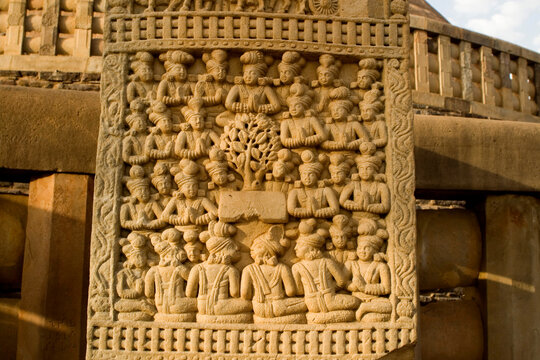
Buddha Statue
A serene 5th-century seated Buddha image located near the Great Stupa, carved in the classic Gupta style of artistry.
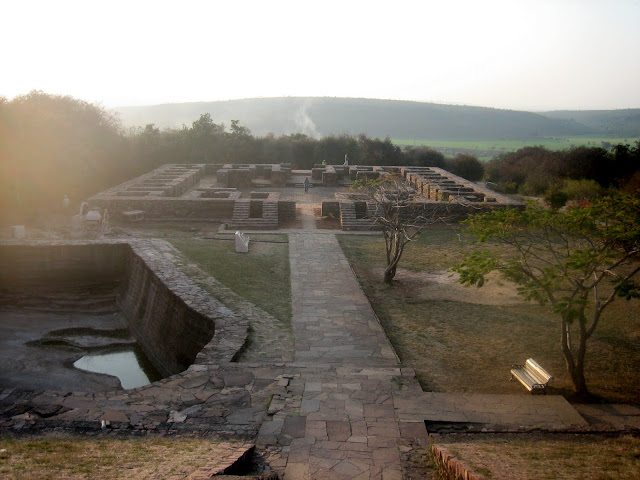
Monastery 51
The ruins of an ancient vihara (monastic residence) showcasing the living quarters and meditation cells for Buddhist monks.
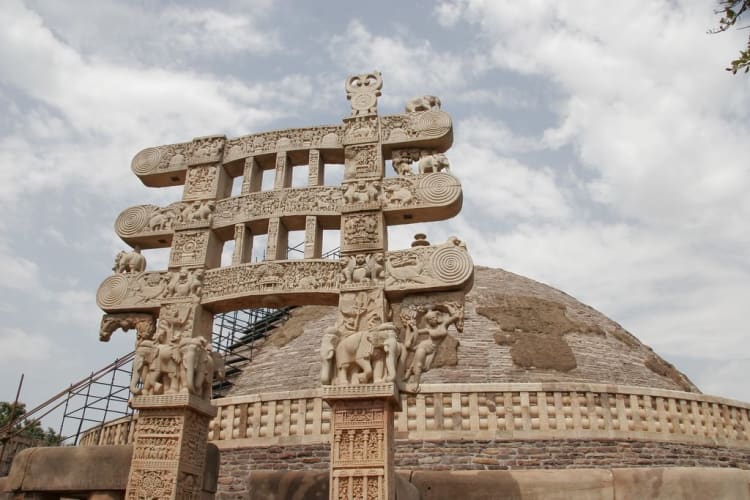
Eastern Gateway
The Eastern Gateway is the main entrance to the Great Stupa and the oldest of the four toranas. Its intricately carved pillars and architraves show the birth of Buddha at Lumbini in the form of Maya Devi’s dream.
The gateway also features the famous Miracle of Sravasti where Buddha multiplies himself, and the War over the Relics scene. Each panel demonstrates exceptional narrative artistry in stone, bringing Buddhist teachings to life. This gateway serves as a magnificent example of early Buddhist art.

Western Gateway
The Western Gateway presents some of the most dramatic narratives in Buddhist iconography. It depicts the Seven Incarnations of Buddha and the Chhaddanta Jataka story of the elephant king.
The famous “Temptation of Mara” panel shows Buddha being attacked by Mara’s armies while calling the earth to witness his enlightenment. The carvings show sophisticated artistic expression with detailed celestial beings and natural elements. This gateway completes the cosmic symbolism of the stupa complex facing the setting sun.
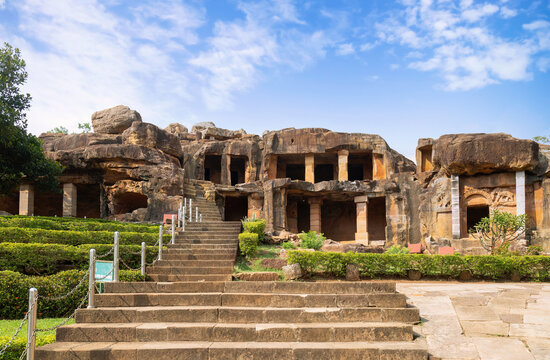
Udayagiri Caves
The Udayagiri Caves represent a remarkable site of rock-cut architecture from the Gupta period (4th-5th century CE). These caves are renowned for their magnificent sculptures, particularly the iconic Varaha panel depicting Lord Vishnu rescuing Goddess Earth.
The site features inscriptions and astronomical alignments that demonstrate advanced knowledge. Many caves are dedicated to Hindu deities, with Cave 13 containing a celebrated Shiva-Parvati sculpture. The caves served as both a religious center and an ancient astronomical observatory.
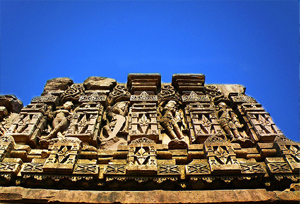
Vidisha
An ancient city located on the Betwa River, serving as an important trade center during the Mauryan and Gupta periods with rich archaeological remains.
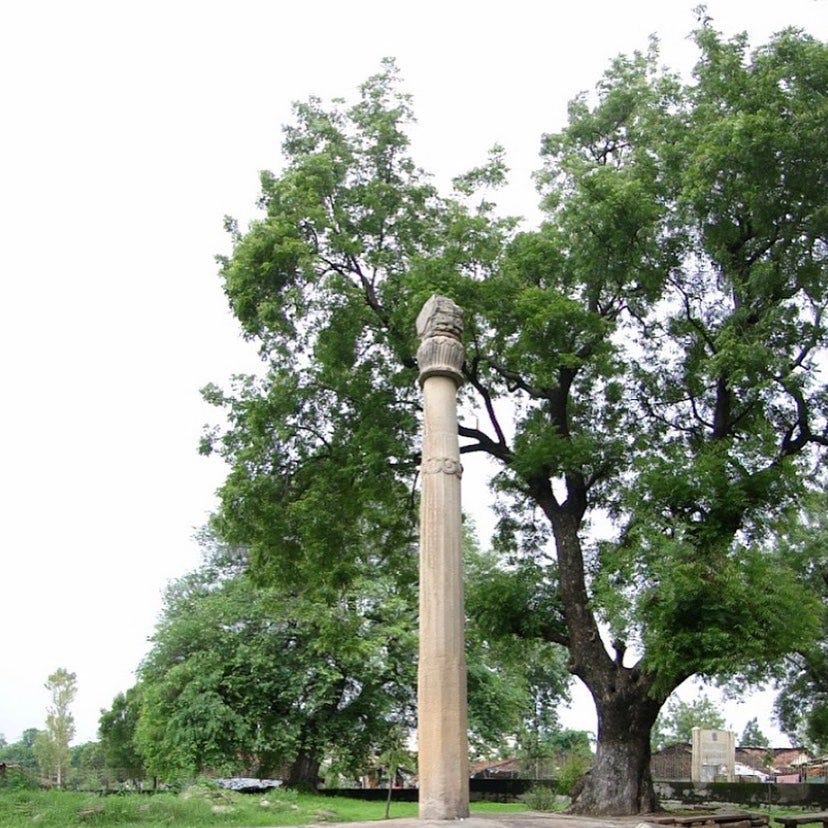
Heliodorus Pillar
A 2nd-century BCE Garuda pillar erected by the Greek ambassador Heliodorus, representing early Indo-Greek cultural connections.

Bhopal
The capital city of Madhya Pradesh, known for its beautiful upper and lower lakes, museums, and blend of Islamic and Hindu architecture.

Pachmarhi
A beautiful hill station in the Satpura Range offering scenic viewpoints, ancient caves, waterfalls, and rich biodiversity for nature lovers.

Bhimbetka Rock Shelters
The Bhimbetka Rock Shelters constitute a UNESCO World Heritage Site showcasing human evolution through rock art spanning 30,000 years. Located in the foothills of the Vindhyan Mountains, the site features over 700 rock shelters across seven hills.
The paintings depict ancient life scenes including hunting, dancing, and animal worship, showing remarkable continuity in cultural traditions. The natural rock formations provide insight into early human habitation patterns in central India. These shelters represent one of the oldest known human settlements in the Indian subcontinent.
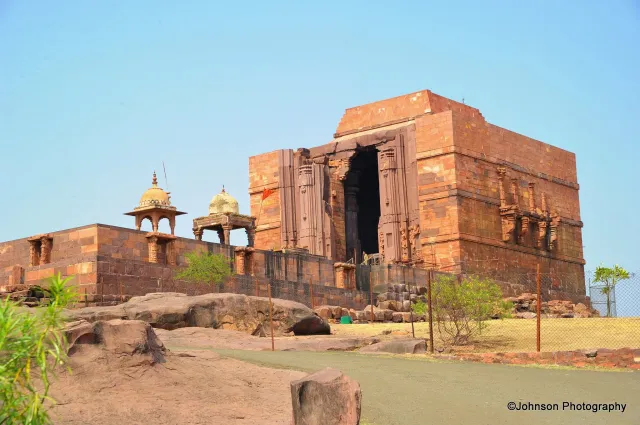
Bhojpur Temple
Famous for its massive incomplete Shiva linga and elegant temple architecture from the 11th century Paramara period.
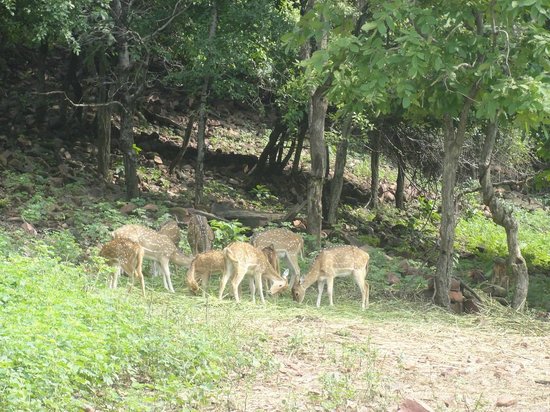
Van Vihar National Park
A wildlife sanctuary and zoo located in Bhopal, housing diverse species including tigers, leopards, and various deer species.

Raisen Fort
A majestic hilltop fort located 45km from Sanchi, known for its impressive fortifications, palaces, and historical significance.

Kerwa Dam
Kerwa Dam is a popular recreational spot near Bhopal, surrounded by dense forests and scenic landscapes. The dam offers various water activities including boating and attracts nature enthusiasts and picnickers alike.
Well-maintained gardens and walking trails along the reservoir provide peaceful retreats for visitors. The area is particularly beautiful during monsoon when the surrounding hills turn vibrant green. It serves as an important water source for nearby regions while being a favored weekend destination.

Sanchi University
Sanchi University of Buddhist-Indic Studies represents a modern institution dedicated to preserving ancient wisdom traditions. Established in the historic Buddhist learning center, it offers academic programs in Buddhist studies, philosophy, and comparative religion.
The university campus blends contemporary infrastructure with traditional architectural elements, creating a serene learning environment. It hosts international conferences and research projects on Buddhist heritage and Indic knowledge systems. The institution continues Sanchi’s legacy as a center for spiritual and academic pursuits.

